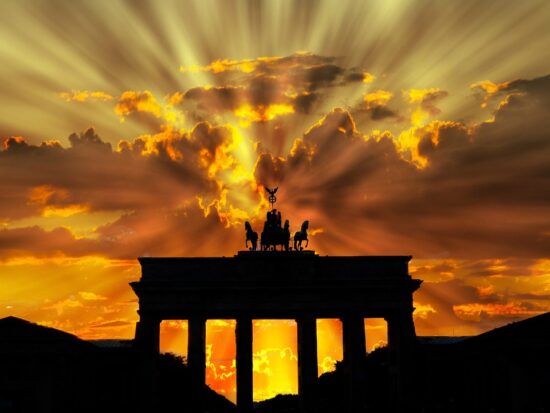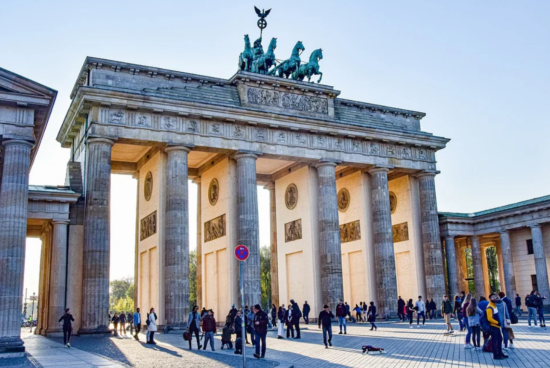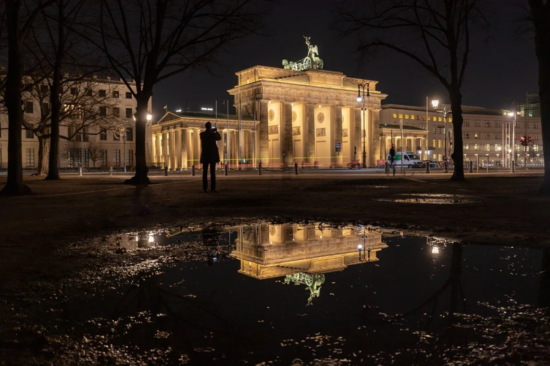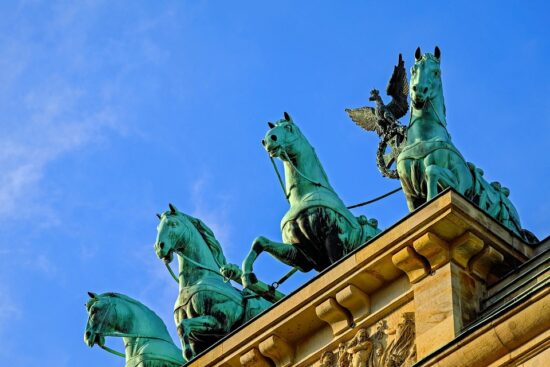Brandenburg Gate
Around 1688, in the time of Friedrich Wilhelm, shortly after the Thirty Years War and a century before the Brandenburg Gate was built, Berlin was a small fortified city in the shape of a star. There was only access through one of the several gates: the Spandauer Tor, the St. Georgen Tor, the Stralower Tor, the Köpenicker Tor, the Neues Tor, or the Leipziger Tor. Relative calm, a policy of religious tolerance, and the status as the capital of the Kingdom of Prussia facilitated the growth of the city.
The Brandenburg Gate was not part of the old fortifications. However, the previous building of the Brandenburg Gate was one of the 18 gates in the Berlin Customs Wall, which was built in the 1730s. The Brandenburg Gate was built on the road to Brandenburg Havel, the city that also granted Berlin city rights.


The building contract for the new and well-known Brandenburg Gate was given by Friedrich Wilhelm II. It was supposed to represent a symbol of peace. The gate was designed by Carl Gotthard Langhans, he was based on the “City Gate of Athens”. The Brandenburg Gate was built between 1788 and 1791 and after its completion, it replaced the simple guard houses in the customs wall.
The gate consists of twelve Doric columns, six on each side. The pillars together form five passageways. Originally, citizens were only allowed to use the outer two of the passageways on each side.


At the top of the gate, you can see Victoria, the Roman goddess of victory. She stands in a chariot pulled by four horses, the Quadriga. The original name of the new Brandenburg Gate was “Peace Gate” and the goddess in the Quadriga was originally Eirene, the goddess of peace. Only with the victory over Napoleon was the goddess in the quadriga changed to the Roman goddess of victory.
The Brandenburg Gate played various political roles in German history. After the Prussian defeat at the Battle of Jena-Auerstedt in 1806, Napoleon was the first to use the Brandenburg Gate after his triumphant advance and took the Quadriga with him to Paris.
After Napoleon’s defeat in 1814 and the Prussian occupation of Paris by General Ernst von Pfuel, the Quadriga was brought back to Berlin. After the victory over Napoleon, the Brandenburg Gate was redesigned as a Prussian triumphal arch by Karl Friedrich Schinkel. The goddess, now definitely Victoria, was endowed with the Prussian eagle. The iron cross on her lance and a wreath of oak leaves and the quadriga was installed to the east, as originally installed in 1793. Only the royal family were allowed through the central archway, as well as members of the Pfuel family between 1814-1919.


With the rise of the Nazis, the Brandenburg Gate was used as a party symbol. During World War II, the gate was badly damaged by bullets and bombs that caused explosions nearby. However, the gate survived WWII well with some damage. With the surrender of Germany and the end of the war, the governments of East and West Berlin, in a joint effort, mended the holes.
The damage was visible for many years after the war. In 1990 the Quadriga was removed from the gate, it was part of the renovation work carried out by the GDR authorities after the fall of the Berlin Wall.
From December 21, 2000, the Brandenburg Gate was renovated for six million euros. On October 3, 2002, the twelfth anniversary of German reunification, the Brandenburg Gate was reopened after extensive renovation.


The Brandenburg Gate has now closed to vehicle traffic again. Much of Pariser Platz has become a cobbled pedestrian zone. The Brandenburg Gate, together with Straße des 17. Juni is a gathering point in Berlin. There is space for more than a million people. Stage shows, parties, and fireworks take place regularly. New Year’s Eve is a special highlight. (By https://www.brandenburg-gate.de/geschichte/)

